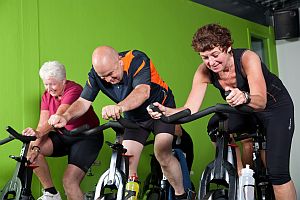Chiropractic Care Gets High Marks from Back Pain Patients
 Lower back pain is a very common problem across the US. In fact, experts estimate that as much as 84% of the population will experience it over the course of a lifetime! For about 23%, this pain will be chronic and for 11%-12% it will be debilitating.
Lower back pain is a very common problem across the US. In fact, experts estimate that as much as 84% of the population will experience it over the course of a lifetime! For about 23%, this pain will be chronic and for 11%-12% it will be debilitating.
While these are sobering statistics, there is also some good news. Depending on your condition, chiropractic care can be an effective treatment option—helping to relieve pain and restore mobility.
Patient Satisfaction by the Numbers
In addition to the many clinical studies that demonstrate the effectiveness of chiropractic care, a number of well-known public health and consumer research organizations have also conducted surveys and polls in order to better understand the experience of patients when it comes to treating back pain. In April and May 2009, the Consumer Reports Health Ratings Center surveyed the magazine’s subscribers. In particular, the Center was interested in learning about back pain patients’ satisfaction with their healthcare providers and with the different treatment options they provided.
- Of patients who had visited a chiropractor, 59% were highly satisfied* with the treatment and advice they received. By comparison, fewer than half were highly satisfied with the treatment and advice provided by their medical specialist (44%) or primary care physician (34%).
- Of patients who had received chiropractic manipulation, 58% reported that the treatment helped a lot. Only 45% reported that prescription drugs helped a lot and just 22% said the same thing about over-the-counter medications.
What’s especially interesting about these survey results are the number of people who participated and their backgrounds.
- The Consumer Reports Health Ratings Center surveyed more than 14,000 participants who had suffered from lower-back pain in the prior year but had never had back surgery.
- More than half reported that pain severely limited their daily routine for a week or longer. Many reported that pain interfered with sleep, sex and efforts to maintain a healthy weight.
- 88% reported that the pain recurred through the year.
- Most had tried five or six different treatments.
Two years later, the Center published an updated report describing how Americans use alternative approaches to healthcare as well as their experience with various providers and therapies. Chiropractic care once again was found to be the most popular approach to back pain relief and was ranked most highly in terms of patient satisfaction.
Your chiropractor is specially trained to relieve back pain and restore mobility by using drug-free, hands-on techniques called manipulation, adjustments or mobilization. He or she may also employ other types of therapy, such as massage and cold laser treatment, depending on the nature and cause of your back pain. In addition, many chiropractic physicians work closely with their patients to develop new, healthier habits—usually around exercise, nutrition and sleep—that can help prevent some types of injuries and chronic medical conditions. By focusing on both immediate pain relief and the underlying causes of back pain, your chiropractor can help you return to your active lifestyle as soon as possible!
Remember—every patient’s body is different. If you’re wondering whether chiropractic care is an appropriate choice for you, please call or visit our office today! We’ll be happy to help!
*Defined as either Completely Satisfied or Very Satisfied.
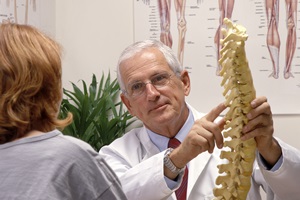

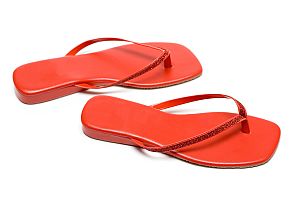

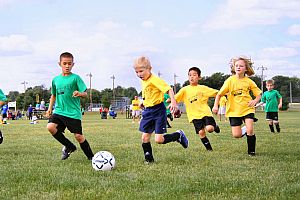
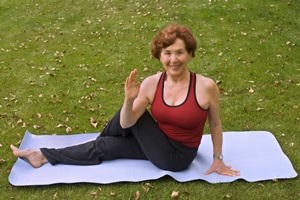 It’s sad but true: As we get older, our balance tends to deteriorate and our reflexes tend to slow. When you’re aware that it’s happening, it can be very frustrating. But when you’re not aware of these gradual changes, they can actually be dangerous as well. This is especially true as you exit middle age.
It’s sad but true: As we get older, our balance tends to deteriorate and our reflexes tend to slow. When you’re aware that it’s happening, it can be very frustrating. But when you’re not aware of these gradual changes, they can actually be dangerous as well. This is especially true as you exit middle age.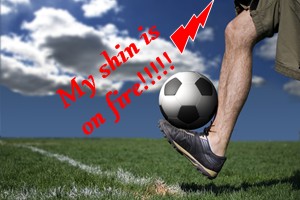 Although you may have heard the term before, you may not know exactly what a “shin splint” is. It’s a common term for painful inflammation at the front of the tibia caused by strenuous activity. Medical professionals refer to it as medial tibial stress syndrome (MTSS). The following exercises will not only help to prevent shin splints or MTSS, but the first two exercises can also help relieve some of the agony for those who are already suffering from the syndrome. If you already have shin splints, use care and restraint in performing these exercises.
Although you may have heard the term before, you may not know exactly what a “shin splint” is. It’s a common term for painful inflammation at the front of the tibia caused by strenuous activity. Medical professionals refer to it as medial tibial stress syndrome (MTSS). The following exercises will not only help to prevent shin splints or MTSS, but the first two exercises can also help relieve some of the agony for those who are already suffering from the syndrome. If you already have shin splints, use care and restraint in performing these exercises.